New Treatment for Macular holes
Recent approval of Jetrea (Ocriplasmin) to treat symptomatic VMA (Vitreo Macular Adhesion) has opened up a new era in non surgical management of macular holes. Previously only a hospital based surgery was able to reverse the process of macular hole development but now a new drug can be injected into the eye painlessly in the office and within a few weeks the process reverses back to more normal vision levels.... more
FDA Approves ASRS Leader's ArgusŪ II Artificial Retina
On February 14, the FDA approved the Argus II artificial retina developed by ASRS Executive Committee and Board Member Mark S. Humayun, MD, PhD.
This breakthrough technology is the first ever to offer limited vision to patients with late-stage retinitis pigmentosa (RP).
Second Sight Medical Products (Sylmar, CA) manufactures the Argus II implant, which has 60 electrodes and a tiny camera mounted on eyeglasses to capture images.
The FDA approved Argus II for adults age 25 years or older with severe to profound RP. About 10,000 to 15,000 of the 100,000 Americans with RP will qualify for Argus II. Up to 4,000 patients a year can be treated with the device.
Macular degeneration and Aspirin?
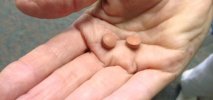
Aspirin and Macular degeneration... is there an increase in the wet form of macular degeneration in those patients taking aspirin? The wet form develops quicker than the dry form. It may only be related to the fact that you are more likely to take aspirin if you have medical problems like stroke or heart attacks in the past and these conditions are more commonly associated with wet age related macular degeneration. ... more

Amsler grid
The amsler grid is an eye test you can do at home that will hopefully make you aware when there are changes happening to your vision that you did not notice otherwise. The brain wants to see and will use either eye to get the job done. If one eye fails, the brain will switch it's attention to the other eye and not make you aware that one eye has failed. One way around this problem is to check each eye on a several times a week schedule. it only takes a few seconds to check. Checking more than once a day is too much however as you will not notice the subtle changes.
Procedure:
Under good reading light and with your reading correction, cover the left eye and look at the center of the graph paper at the central dot or "X" that is on the chart. Do not move your eye from the central dot and try and notice the vertical and horizontal lines that make up the graph paper pattern. They should appear straight. If however, they are broken, smudgy or distorted, then you should seek eye care as soon as possible. Let the physican's office know that the Amsler grid has changed. The faster it is changing, the faster you need to be seen. After checking the right eye, cover it and check the left.
Click here to download the Amsler Grid
Normal Amsler grid: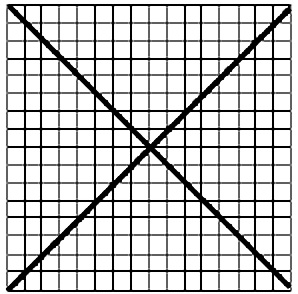
Some times as the retina develops dry changes it may look like this: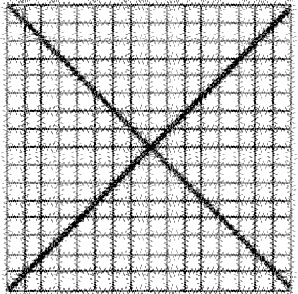
As the wet changes start to happen, it may look like this: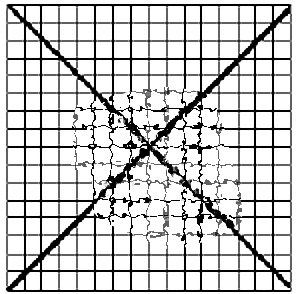
As the wet ARMD starts to bleed and cause distortion, it may look like this: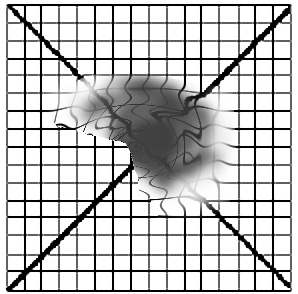
If the above Amsler grid looks anything like this then you may have wet macular degeneration and need attention soon.
Download a copy of the Amsler Grid here






